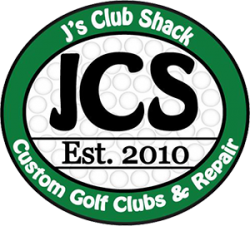Club Fitting
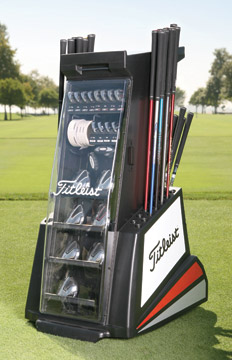
In this section I have provided you the information that can suit you best in terms of shaft flex, loft and lye. Many times I see a student who may pull, push, hook or fade the ball and it’s a simple matter of shaft flex, loft or lye. Should you ever discover your swing speed, loft and lye through a fitting, you can gauge your initial flex in the charts below. Please take some time to familiarize yourself with the correct flex, loft and lye so you can be fit accordingly. Also, it is important to visit with a club Fitter and your local PGA professional to be fit appropriately – JJ Shaft Flex Selection (Driver & 6 Iron Charts).
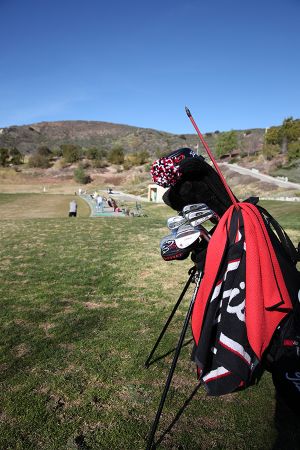
Over the last Decade, I’ve studied great club makers such as Tom Wishon, Jason Mueller & Bob Vokey. Below I will share with you a combination of what I have learned from Mr. Wishon & Jason Mueller. Their Expertise on Shaft Flex, Lye, Weight and Torque is superior within the realm of club making.
Shaft Flex: There are five generally used ratings for shaft flex: Extra Stiff, Stiff, Regular, Senior and Ladies, usually denoted by the letters X, S, R, A and L ("A" is used for Senior because this flex was originally called "amateur").
Having a flex that doesn't match the needs of your swing will result in the clubface being misaligned at impact, causing your shots to go off-target.
What Flex Impacts:
Shaft flex impacts, either directly or indirectly, the accuracy, trajectory and distance of your shot. Three pretty important things, eh?
As the shaft flexes throughout the swing, the position of the club head changes. And the face of the club must be Square (perfectly straight) at impact to get the most out of the shot. If you have the wrong flex for your swing, there is less chance that you'll make contact with the ball with a square clubface.
Shaft Weight: The weight of the shaft is the major factor in determining the total weight of all golf clubs.
While clubhead weight and grip weight can and do vary depending on the golfer's need for a higher swing weight (head weight) or a larger grip size (grip weight), neither the head nor the grip exist in nearly as wide a range of weights as does the shaft.
During the time of this writing, shafts can be bought that weigh as much as 130 grams (4.6 ounces) or as light as 40 grams (1.4 ounces). Thus, when a golfer switches from an average steel shaft to an average graphite shaft today, the drop in total weight will be in the area of at least 50 grams or more (1.75 ounces).
Swing speed is the most direct factor affecting shot distance. The lighter the total weight of the golf club, the higher the swing speed the golfer should be able to generate with the club.
Torque: While torque has other meanings outside of golf, for the sake of the sport the term applies to a golf club shaft's ability to resist twisting. This twisting will no doubt have an impact on the distance and accuracy of one's shot. Torque can also be thought of as a force that leads to rotation within a golf club, or a measure of approximately how much twist there is in a particular club.
For the purposes of golf, shafts with lower torque are typically of higher performance and provide more forgiveness in terms of accuracy. Meanwhile, those clubs with higher torque tend to features less accuracy. Flexible shafts are known for having higher torque, due in part to their increased ability to bend.
The flex of a golf club shaft is the energy stored during the downswing, upon which it is released at the point of impact. This flex is directly correlated with torque, in that the more a club can flex the better it can rotate around its axis (which, in essence, is the definition of torque). Of course, the more flex there is in a golf club, the more torque--and in all likelihood-- the less accuracy and forgiveness on a golf shot.
For those who tend to slice their shots, selecting a shaft with some torque is ideal as it will result in more squaring up of the clubhead at the point of impact. On that note, it might be best to purchase a graphite shaft over a steel shaft, as steel has very little torque. As a rule, the bigger the slice, the more torque necessary to square up shots.
Meanwhile, those who tend to hook their shots should choose a club with very little torque, as it will keep the club head squared up. On that note, it might be best to choose a steel shaft in this instance, as steel has very little torque.
| Shaft Flex Selection (Driver) | |
|---|---|
Carry Distance
|
Swing Speed Flex |
Under 180 yards
|
Under 75 mph Ladies |
180 to 200 yards
|
75 to 85 mph Senior/A/M |
200 to 240 yards
|
85 to 95 mph Regular |
240 to 275 yards
|
95 to 110 mph Stiff/Firm |
Over 275 yards
|
Over 110 mph Tour (Extra) Stiff |
| Shaft Flex Selection (6 Iron Carry Distance) | |
|---|---|
Carry Distance
|
Swing Speed Flex |
Under 100 yards
|
Under 60 mph Ladies |
100 to 130 yards
|
60 to 70 mph Senior/A/M |
130 to 155 yards
|
70 to 80 mph Regular |
155 to 175 yards
|
80 to 90 mph Stiff/Firm |
Over 175+ yards
|
Over 90+ mph Tour (Extra) Stiff |
Shaft Material
The number one difference between graphite and steel shafts is their weight. While steel shafts today can be made to weigh as little as 90 grams (3.2 oz.), and some graphite shafts as heavy as 120 grams (4.2 oz.), the big reason graphite shafts became popular is their ability to offer stiffness and durability suited to the most powerful swings while being very light in weight.
Remember, the shaft's weight is the number one factor that controls the total weight of the entire golf club. Lighter total weight equals the potential to increase the golfer's swing speed, which equals the potential to increase the distance of the shot.
The average steel shaft today weighs between 115g to 125g (4.0 to 4.4 oz.). Put that together with a typical 195-gram (6.9-oz.) driver head and a normal 50-gram (1.75-oz.) grip and you have a total weight for the driver of some 365 grams (12.9 oz.).
Many of the graphite shafts for drivers today are made to a weight of around 65-70 grams. Assemble that with the driver head and the grip and the total weight of a typical graphite shaft driver will be about 11 oz. That 1.9-oz.-lighter total weight (compared to the typical steel-shafted driver) can mean as much as 2-4 mph more swing speed for the golfer, which in turn translates to about 6-12 yards more distance.
Makes it sound like all golfers should be using graphite shafts in all their clubs, right? On the surface that is true. However, some golfers who are very strong physically, and/or who are quick to very quick with their swing tempo, must have a little heavier total weight to help them gain a little more control over their swing.
In addition, steel and graphite shafts are totally different in the manner in which they transfer the vibrations from impact up to the hands, which in turn affects the feel of the shot. Simply stated, some golfers prefer the more crisp, sharper feel of hitting the ball with steel shafts, while some prefer the softer, more dampened feel of graphite. A combination of feel and accuracy is what the player is looking for.
If you are a player primarily looking for more distance, you should definitely be fit with the proper graphite shaft design in your woods and irons to match your swing. On the other hand, if distance is not the main focus of your game because you already have a high swing speed, steel is the better option to gain control within your distance – JJ
Lie angle and understanding the angle of the clubface.
The lie angle of a club is the angle formed by the sole of the club and the shaft. This angle affects the position of the club head at address and impact. Proper lie will cause the center of the club head to strike the ground (good) rather than the heel or toe (bad).
Lie Angle Variations:

A club which is too upright for the golfer will hit the ground with the heel of the club, causing the clubface to close and resulting in a pull or hook (for right-handed players.) A club which is too flat will hit the ground with the toe of the club causing the clubface to open and resulting in a push or slice (for right-handed players.)
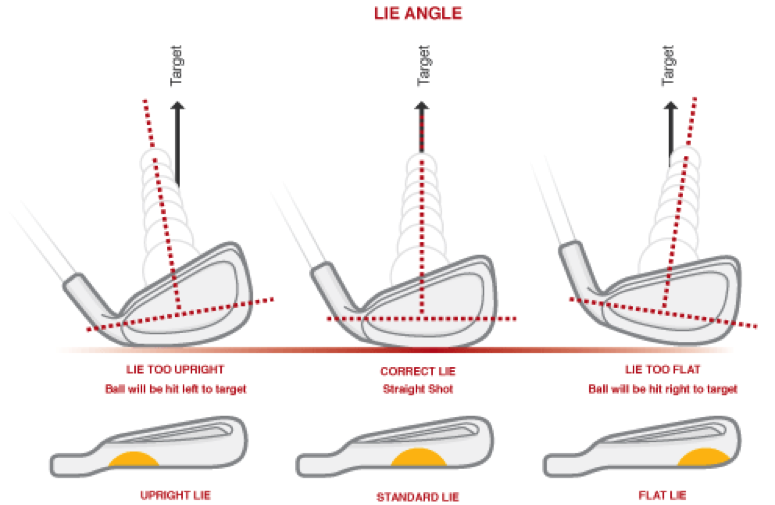
Determining the proper lie angel for your clubs. |
||||
|
|
4'10" to 5'6" |
5'6" to 6'2" |
6'2" to 6'7" |
|
|
40" |
3 degrees up |
3 degrees up |
3 degrees up |
|
|
39.5" |
3 degrees up |
3 degrees up |
3 degrees up |
|
|
39' |
3 degrees up |
3 degrees up |
2 degrees up |
|
|
38.5" |
3 degrees up |
2 degrees up |
2 degrees up |
|
|
38' |
2 degrees up |
2 degrees up |
2 degrees up |
|
|
37.5" |
2 degrees up |
2 degrees up |
1 degrees up |
|
|
37" |
2 degrees up |
1 degrees up |
1 degrees up |
|
|
36.5" |
1 degrees up |
1 degrees up |
1 degrees up |
|
|
36" |
1 degrees up |
1 degrees up |
standard lie |
|
|
35.5" |
1 degrees up |
standard lie |
standard lie |
|
|
35" |
standard lie |
standard lie |
standard lie |
|
|
34.5" |
standard lie |
standard lie |
standard lie |
|
|
34" |
standard lie |
standard lie |
standard lie |
|
|
33.5" |
standard lie |
standard lie |
standard lie |
|
|
33" |
standard lie |
standard lie |
1 degrees flat |
|
|
32.5" |
standard lie |
1 degrees flat |
1 degrees flat |
|
|
32" |
1 degrees flat |
1 degrees flat |
1 degrees flat |
|
|
31.5" |
1 degrees flat |
1 degrees flat |
2 degrees flat |
|
|
31" |
1 degrees flat |
2 degrees flat |
2 degrees flat |
|
|
30.5" |
2 degrees flat |
2 degrees flat |
2 degrees flat |
|
|
30" |
2 degrees flat |
2 degrees flat |
3 degrees flat |
|
|
29.5" |
2 degrees flat |
3 degrees flat |
3 degrees flat |
|
|
29" |
3 degrees flat |
3 degrees flat |
3 degrees flat |
|
Choosing your proper club length and lie:
Research indicates that lie angle is most effectively measured dynamically. It can be generalized that taller players require a more upright lie angle and shorter players a flatter lie angle. However, other variables affect impact lie angle such as the player’s address posture and how his/her hands are positioned at address and impact, either high or low. Therefore, a suitable lie angle cannot always be prescribed based on the player’s static (height and wrist-to-floor) measurement. Another good rule of thumb when deciding on proper club length is every ½" added to the standard length of a club will in return make the club play 1* more upright. Every 1/2" subtracted will in return make the club play 1* flatter.
If one is looking to achieve the most accurate club fitting, players should be fitted using both static and dynamic measurements. There is a direct correlation to the direction of the golf ball flight and the ability to swing consistently without compensations on the swing. To have accurate and precise measurements, you must have someone other than you gather the information. Lie angles listed are intended to be a reference chart only. Professional custom club fitting is needed and recommended to determine exact and correct length & lie.
Remember to get with your local pro and or club fitter to determine these factors- JJ
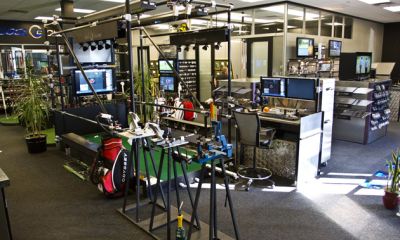
If you are in the Southern California area and are looking to be fit, Please visit J’s Club Shack. Jason Mueller is a flightscope certified club fitter, with over 10 years fitting all levels of golfers. He’s worked with Local players, AJGA Golfers, Collegiate players and Mini Tour Professionals. You can expect nothing but the best- JJ
Areas of specialty include:
Shafting – Grips – Loft & Lye (putter & irons)- Launch Monitor ( Spin / Launch Angle ).
(805) 341-8163
Located at
Simi Hills Golf Course
Custom Golf Club Fitting And Repair
Store Hours:
Tuesday to Saturday 9:00pm to 6:00pm
Sunday and Monday 10:00 am to 4:00 pm


